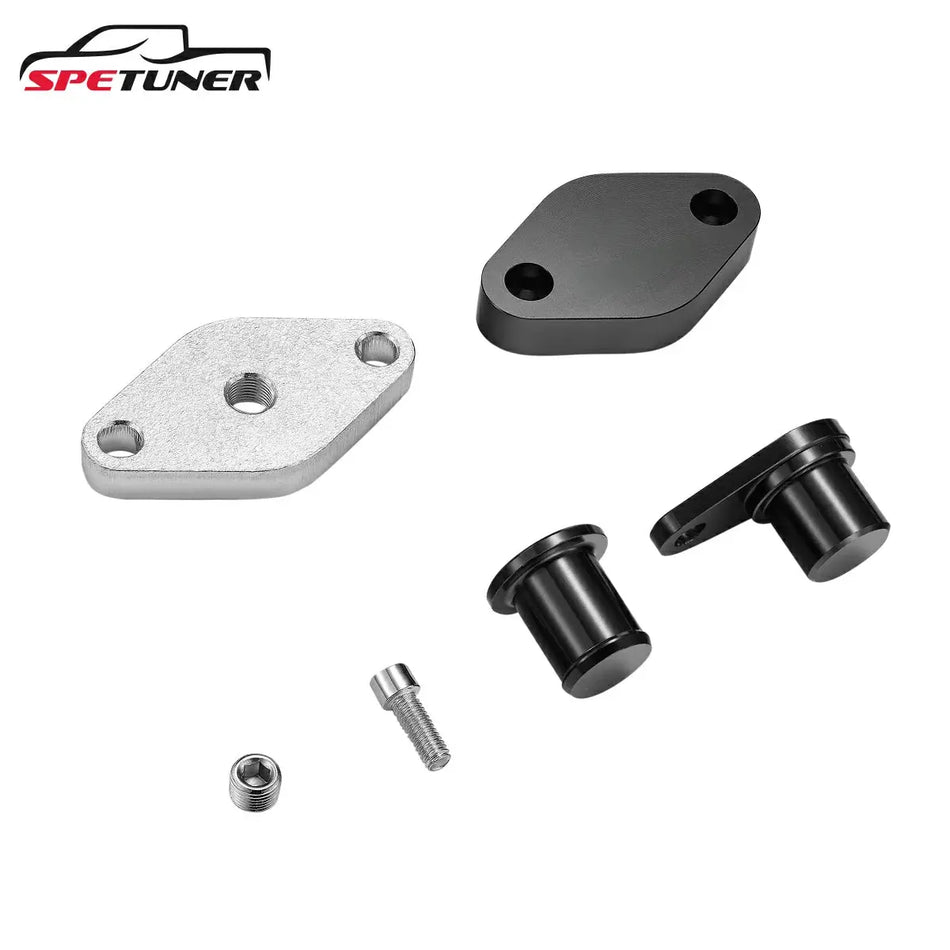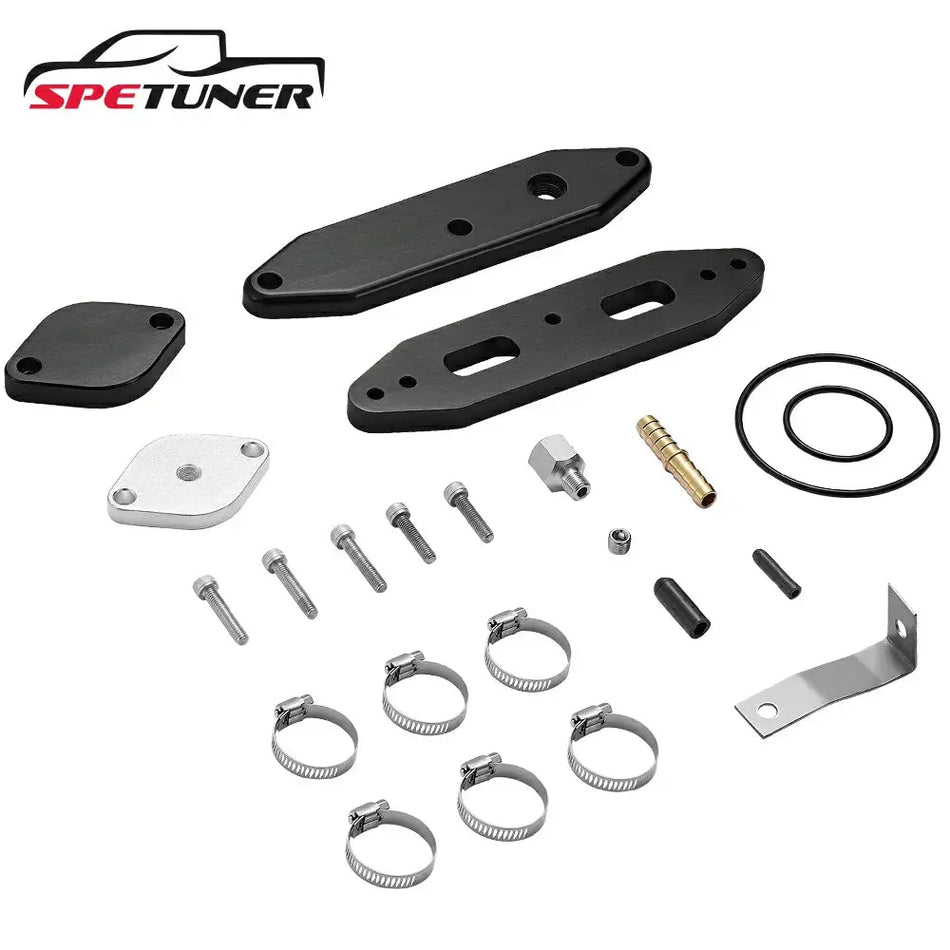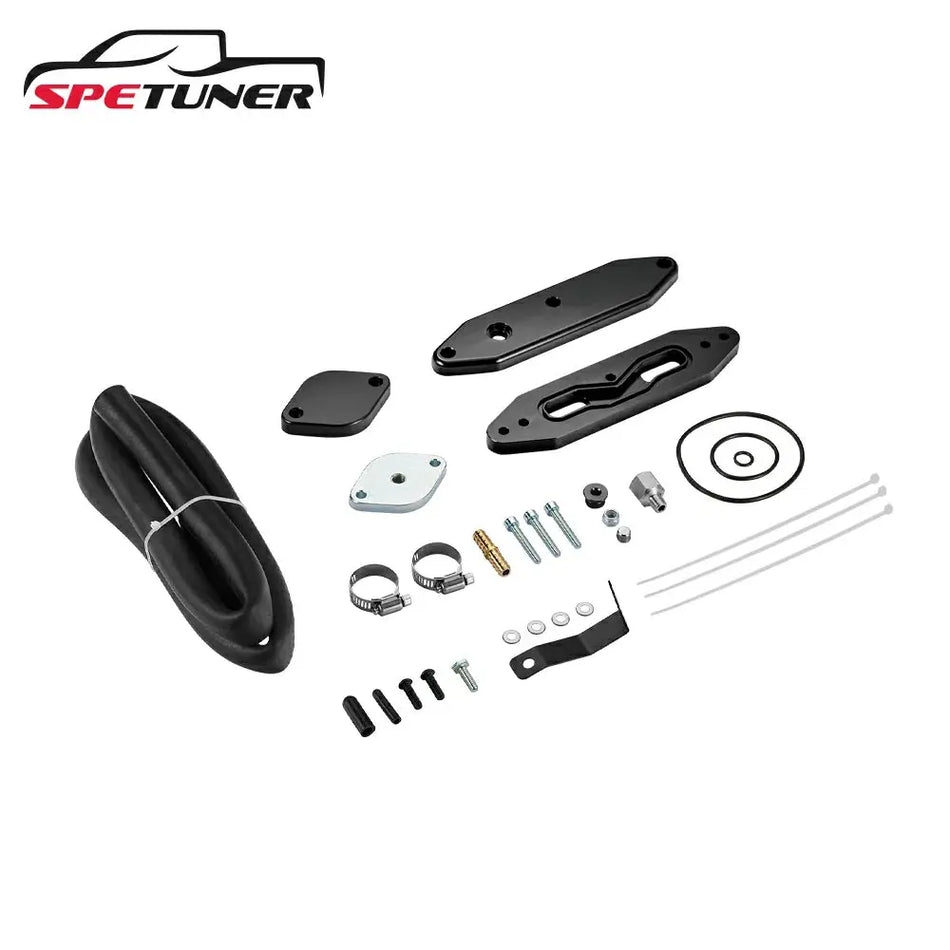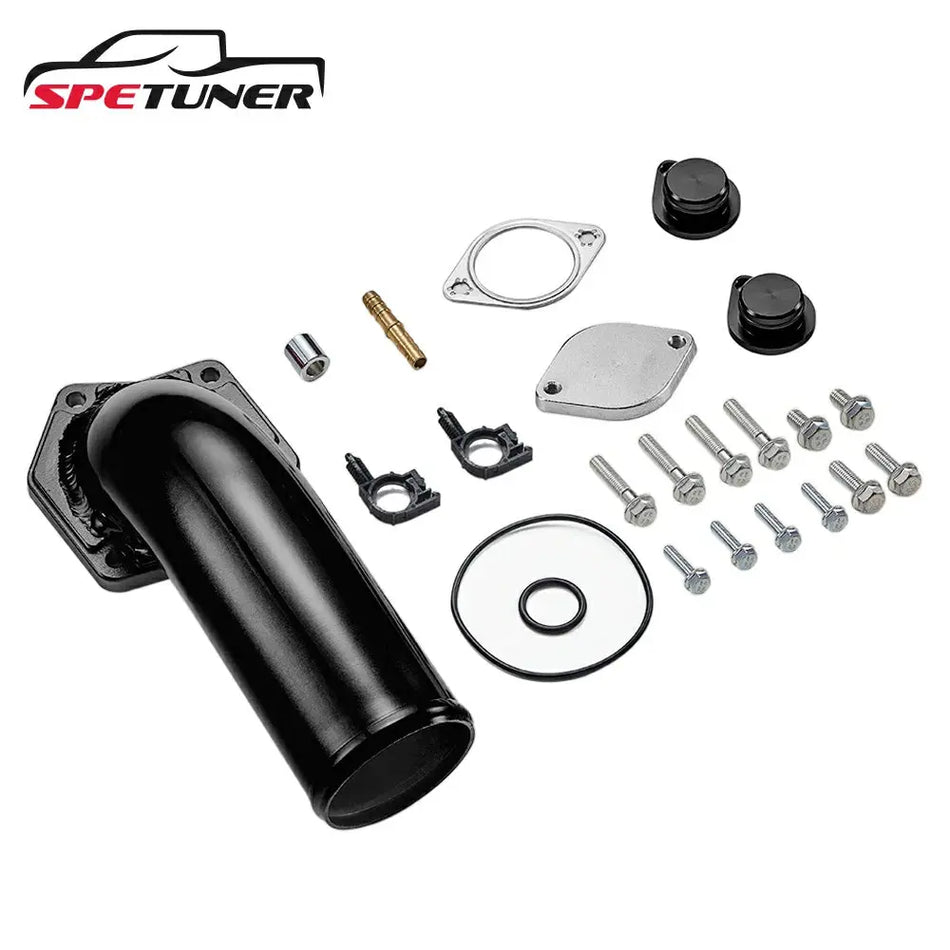1. Introduction
F150 Powerstroke Overview
The F150 3.0L Powerstroke is one of the more recent diesel engine options for Ford's popular F-series lineup. Known for its towing capabilities and fuel efficiency, this engine has found a strong following among diesel enthusiasts and truck owners who need both power and reliability.
In this article, we’ll compare the performance of the F150 3.0 Powerstroke in its stock (unmodified) vs. deleted (modified) states. This will give you a solid understanding of what changes when you remove components like the EGR or DPF systems and tune the engine for more power.
2. F150 3.0 Powerstroke Deletion Background and Legal Considerations
2.1 Common Deletion Mods for the F150 3.0 Powerstroke
When we talk about deleting a diesel engine like the F150 3.0 Powerstroke, we're usually referring to removing emissions-related components, like the EGR (Exhaust Gas Recirculation) and DPF (Diesel Particulate Filter) systems. These modifications are popular among truck owners who want to increase power, improve fuel efficiency, and simplify the exhaust system.
Removing the EGR system prevents exhaust gases from being recirculated into the intake, which can improve engine efficiency and reduce carbon buildup. The DPF is a filtration system that catches soot, but it can often clog and reduce engine performance over time.
2.2 Legal Considerations for Deletion Mods
Before diving into any modifications, it's crucial to know the legalities in your area. EGR dpf delete kit can be illegal in certain states or countries due to environmental regulations. Always check local laws to ensure you're not violating any emissions rules.
For example, if you're in the United States, the EPA has strict regulations against tampering with emissions systems on vehicles, and it can lead to hefty fines. Some states, like California, have stricter rules that could prevent you from passing emissions testing if you have deleted components.
If you are unsure, consult with a professional or check the local regulations to avoid costly mistakes.

3. Stock F150 3.0 Powerstroke Performance
3.1 Power Output in Stock Form
When testing the F150 3.0 Powerstroke in stock form, we used a dyno (dynamometer) to measure its actual performance. In stock trim, the truck produced about 207 horsepower and 398 lb-ft of torque.
While these numbers are slightly lower than Ford's advertised power figures, this is typical due to drivetrain losses (friction in the transmission, drivetrain, etc.). So, even though it's a bit under the factory rating, it’s still pretty close to what you’d expect from a stock diesel engine of this size.
It’s important to note that stock trucks generally run at their safe factory settings and are designed to be reliable and efficient without pushing the engine too hard.
3.2 Fuel Efficiency Testing in Stock Form
Fuel economy is another key consideration for diesel truck owners. When we tested fuel efficiency on the dyno in the stock state, we saw the F150 3.0 Powerstroke averaging 9.5 L/100km at 100 km/h in 10th gear.
To give you a better idea, when we bumped the speed to 115 km/h, the fuel consumption improved to 8.2 L/100km. The lower fuel consumption at higher speeds might seem counterintuitive, but it’s because the engine runs more efficiently in top gear, where it's not working as hard.
This stock setup offers a solid balance of power and fuel efficiency, making it a great choice for those who prioritize reliability and lower maintenance costs.
4. Performance Gains After Deletion Mods
4.1 Deletion Mod Details for the F150 3.0 Powerstroke
When it comes to deleting components like the EGR and DPF on the F150 3.0 Powerstroke, the process involves removing the EGR cooler, the DPF filter, and replacing certain parts of the exhaust system. These mods are usually paired with a tuning session, where the ECU (engine control unit) is recalibrated to optimize the truck's performance.
For this particular test, we used a Diesel Dudes kit, which includes delete pipes that run all the way from the turbo to the muffler. After removing the EGR system and installing the new exhaust components, we performed the necessary tuning with a 75-horsepower tune using an EasyLink tuner.
4.2 Power Gains from Deletion Mods
After the deletion mods were installed, we ran the truck on the dyno again to see the performance improvements. In our first dyno run, the truck produced 243 horsepower. However, after two more runs, the numbers leveled out at 255 horsepower and 510 lb-ft of torque. That’s a solid 50 horsepower and 100 lb-ft of torque increase over the stock performance!
These gains are mainly due to the improved flow in the exhaust system and the more aggressive engine tuning. The 75-horsepower tune on this truck brought the power up significantly, and there's still potential for even more power with higher tuning levels (like the 90 and 120 horsepower tunes).
4.3 Improved Fuel Efficiency After Deletion Mods
Surprisingly, the fuel efficiency also saw improvements after the deletion mods. On the dyno, we tested fuel consumption again. At 100 km/h, the truck now averaged 8.6 L/100km, a noticeable improvement from the 9.5 L/100km we saw in stock form.
When we pushed the speed to 115 km/h, fuel consumption further dropped to 7.8 L/100km, which is a 0.4 L/100km improvement compared to stock.
This improvement in fuel efficiency is a result of the deleted components reducing the engine's load and making the exhaust system more efficient. So, not only does the truck gain more power, but it also runs more efficiently, especially at higher speeds.

5. Exhaust Sound Comparison
5.1 Stock Exhaust Sound
When you hear a stock F150 3.0 Powerstroke, the exhaust is relatively quiet. There's not much of a growl or aggressive tone, as the truck is designed to meet emissions standards and provide a smooth, silent ride.
While it's not obnoxious, some truck owners find the stock exhaust sound a bit too subdued for their liking, especially if they want their truck to make a bit more noise to match its power.
5.2 Deletion Exhaust Sound
Once the EGR and DPF systems are deleted, the exhaust sound of the F150 3.0 Powerstroke becomes noticeably louder and more aggressive. Although the truck still retains the factory muffler, the removal of the restrictive EGR and DPF systems leads to a deeper, throatier exhaust note.
In this case, the sound improvement was clear even with the muffler still in place. If you were to remove the muffler entirely, you’d likely hear an even louder, more aggressive sound — probably much more "rowdy" than what you'd expect from the stock system.
While it’s not for everyone, this enhanced exhaust tone is something many diesel truck owners appreciate, especially those who want their truck to have a more pronounced presence on the road.
6. Overall Impact of Deletion Mods on the F150 3.0 Powerstroke
6.1 Performance Gains Summary
After comparing the stock and deleted F150 3.0 Powerstroke, it’s clear that the deletion mods offer a substantial improvement in both power and torque. In stock form, the truck produces 207 horsepower and 398 lb-ft of torque. However, after deleting the EGR and DPF and adding a tuning mod, the truck produced up to 255 horsepower and 510 lb-ft of torque, representing a 50 horsepower and 100 lb-ft of torque increase.
This kind of improvement is significant, especially for drivers who use their trucks for towing or other heavy-duty tasks. The deletion mods give the F150 3.0 Powerstroke a noticeable power boost that enhances overall driving performance.
6.2 Fuel Efficiency Improvement
Along with the performance boost, the fuel efficiency also improved after the deletion mods. The truck went from averaging 9.5 L/100km at 100 km/h to 8.6 L/100km after the mods, and at 115 km/h, it dropped from 8.2 L/100km to 7.8 L/100km.
This improvement in fuel economy might surprise some, considering that deletions are often seen as primarily performance upgrades. However, because the engine is no longer bogged down by the restrictive emissions systems, it runs more efficiently, leading to better fuel consumption — especially at highway speeds.
6.3 Driving Experience Enhancements
The overall driving experience after the deletions is more responsive. With more power available and improved throttle response, the truck feels more alive and capable, especially under load. The deleted exhaust system also contributes to a more aggressive sound, which many diesel enthusiasts enjoy.
For those who love the feel of a more powerful engine and a truck that sounds like it means business, the deletions provide a noticeable improvement.
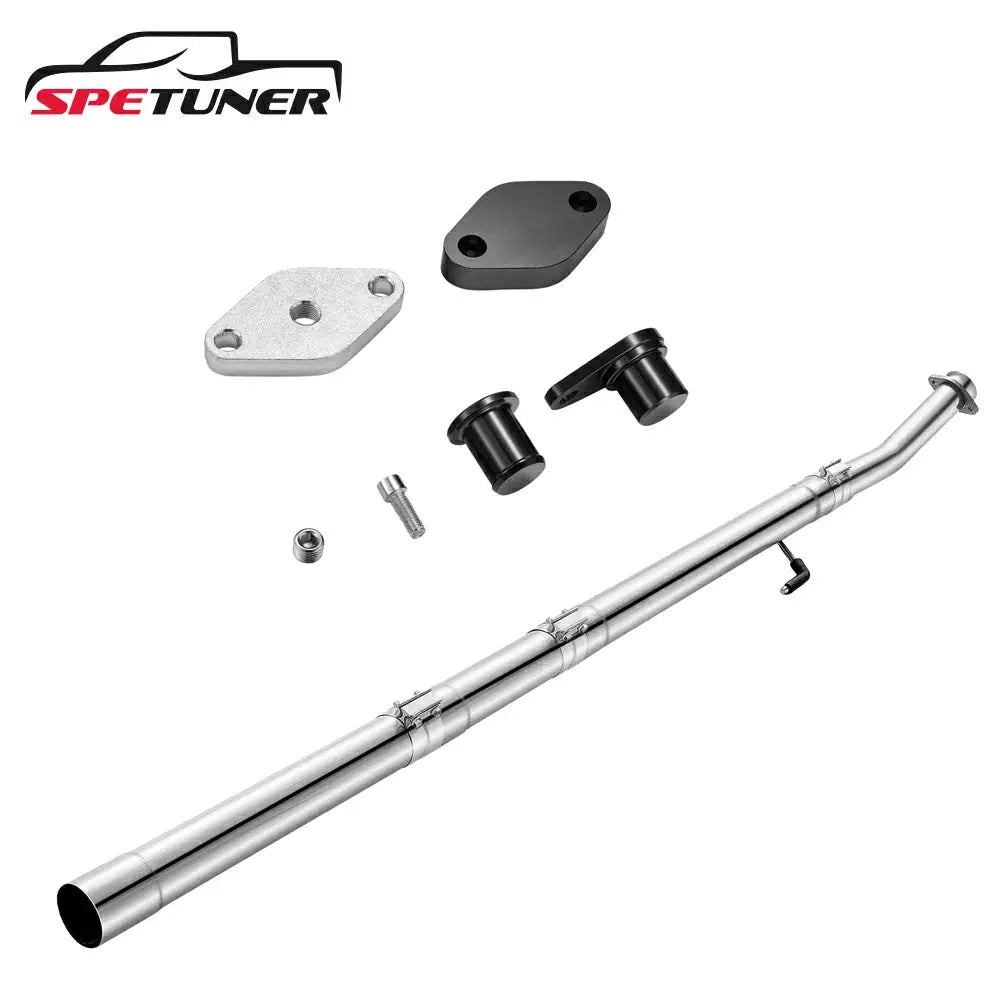
Conclusion
After comparing the stock and deleted states of the F150 3.0 Powerstroke, the deleted version offers significant performance benefits. The deleted setup delivers around 50 more horsepower and 100 lb-ft of torque, providing a noticeable improvement in overall power and drivability. Along with that, you get a more aggressive exhaust sound and better fuel efficiency at highway speeds.
However, it's important to weigh these gains against the potential legal risks and maintenance costs. In some areas, deleting emissions components might be illegal, so make sure you're aware of the laws in your state or country before proceeding.
If you’re looking for an immediate boost in power, torque, and fuel efficiency, and you’re willing to take on the potential legal and maintenance trade-offs, then deleting your F150 3.0 Powerstroke might be a great option. For towing, performance driving, and those who just want their truck to sound better, the deleted setup could be very rewarding.
On the other hand, if legal compliance or long-term reliability is a concern, sticking with the stock setup might be the safer route. The F150 3.0 Powerstroke in stock form already delivers solid performance, and keeping it stock ensures you won’t run into any issues with emissions regulations or potential warranty voiding.
Ultimately, the decision to delete or keep your truck stock depends on your priorities. If performance and sound are at the top of your list, and you’re aware of the legal implications, then going with a deleted setup can give you the best of both worlds — more power and better efficiency. Just be sure to consult with a professional and double-check your local laws before diving in.
You can refer to the source video for additional insights and data used in this comparison here:
This video provides the detailed dyno runs and testing for the F150 3.0 Powerstroke in both stock and deleted states.
FAQs
Q1: What is the difference between F150 3.0 Powerstroke STOCK vs DELETED?
A1: The main difference is in the performance. Deleting components like the EGR and DPF boosts horsepower and torque while improving fuel efficiency.
Q2: Will deleting my F150 3.0 Powerstroke affect its fuel economy?
A2: Yes, deleting the EGR and DPF can improve fuel efficiency, especially at higher speeds, as the engine runs more efficiently without the emissions restrictions.
Q3: How much power does the F150 3.0 Powerstroke gain after deletion?
A3: After deletion, the F150 3.0 Powerstroke can gain up to 50 horsepower and 100 lb-ft of torque, depending on the tuning and modifications.
Q4: Is deleting the EGR and DPF legal?
A4: It depends on your location. In some areas, deleting emissions systems is illegal. Always check your local laws before proceeding with these modifications.
Q5: What are the benefits of deleting the EGR and DPF on the F150 3.0 Powerstroke?
A5: Deleting these systems improves engine power, reduces maintenance issues like soot buildup, and can improve fuel efficiency.
Q6: Will deleting my F150 3.0 Powerstroke void its warranty?
A6: Yes, deleting emissions components could void your truck’s warranty, especially if it’s under a factory warranty or emissions-related coverage.
Q7: Can deleting my F150 3.0 Powerstroke improve towing performance?
A7: Yes, deleting the EGR and DPF can boost power and torque, which can make towing easier and more efficient, especially for heavy loads.
Q8: Does the exhaust sound change after deleting the F150 3.0 Powerstroke?
A8: Yes, the exhaust sound becomes louder and more aggressive after deletion, especially with the removal of the DPF and EGR systems.
Q9: How does the dyno performance compare for stock vs deleted F150 3.0 Powerstroke?
A9: On the dyno, a deleted F150 3.0 Powerstroke can show significant gains—up to 50 horsepower and 100 lb-ft of torque over the stock configuration.
Q10: Is it worth deleting the F150 3.0 Powerstroke for better performance?
A10: If you're looking for more power, better towing capability, and improved fuel economy, deletion mods can be worth it. However, consider the legal and warranty implications before proceeding.


